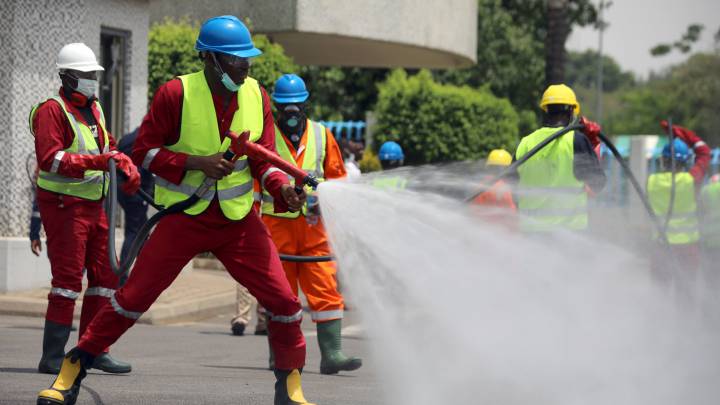News
Climate Change in the Face of COVID-19
- May 8, 2015
- Posted by: admin
- Category: climate, covid

Today, schools are shut down, events postponed, flights are cancelled, and economies all over the world have all but come to a grinding halt. The culprit? The 2019 novel coronavirus that has caused this pandemic. Since the virus first emerged in Wuhan, China in December 2019, the world as we knew it has changed.
While climate change and the COVID-19 pandemic may appear as two very different crises, they are similar in a lot of ways; they impact everyone, irrespective of race or socio-economic class, and they require the joint efforts of institutions and nations of the world to solve them.
COVID-19 and air pollution
Around the world, air pollution is responsible for a variety of health issues ranging from lung cancer to heart disease. These effects cost economies about $5 trillion yearly in welfare. As the World Health Organization (WHO) estimates, 92% of people worldwide do not breathe clean air.
As most of the world is shut down in an effort to “flatten the curve” of the COVID-19 spread, there have been noticeable impact on air quality in a lot of places. To a limited degree, the reduced emissions of carbon dioxide and other greenhouse gases have caused a decrease in the emission of air pollutants. According to Carbon Brief, carbon dioxide emissions this year will fall by 4-8% (between 2 and 3 billion tones) – the largest annual fall ever recorded.
While this improvement in air quality is a marked positive, the toll of sustained air pollution is likely to make the impact of COVID-19 in these environments deadlier – in the form of more severe cases and more deaths. This is because the virus primarily infects the lungs and the respiratory system, which are also the primary contacts of air pollutants.
Climate change and the future of pandemics
In 2016, 72 nomadic herders, including 41 children, were hospitalized in the Far North of Russia as a result of an anthrax outbreak. One boy eventually died. Anthrax was last seen in that region in 1941. The primary cause of the incident was the unusually high temperatures (due to climate change) that caused the thawing of permafrost, releasing anthrax spores into the air.
While the COVID-19 outbreak is not directly correlated to our current climate crisis, the damage done by climate change to our natural world will likely cause more diseases to emerge and spread faster in the coming decades.
We can learn a lot from the global COVID-19 response
If the coordinated efforts to combat COVID-19 across borders has taught us anything, it is that the world can be united in the face of an existential threat. This is the same approach we urgently need to face climate change.
Our energy production and consumption approach also play a crucial role. Since COVID-19 reached a pandemic status in March 2020, factories all over the world have been shut down, severely impacting energy demands. The resulting positive effects of the environment shows that transiting to eco-friendly energy is not only possible but needed now more than ever. We need to make the shift from coal and oil to more sustainable energy sources like gas and renewables.
As we continue to battle this pandemic, people are losing their sources of livelihoods, worried about their health and dealing with all the uncertainties that follow. Climate change has been causing similar results for years now, albeit more subtly. Arable lands are being turned into wastelands, coastal areas are flooding, more frequent and more severe weather phenomena are occurring all over the world. Both crises have exposed our vulnerabilities in our natural habitat, and we cannot fail to address them.
